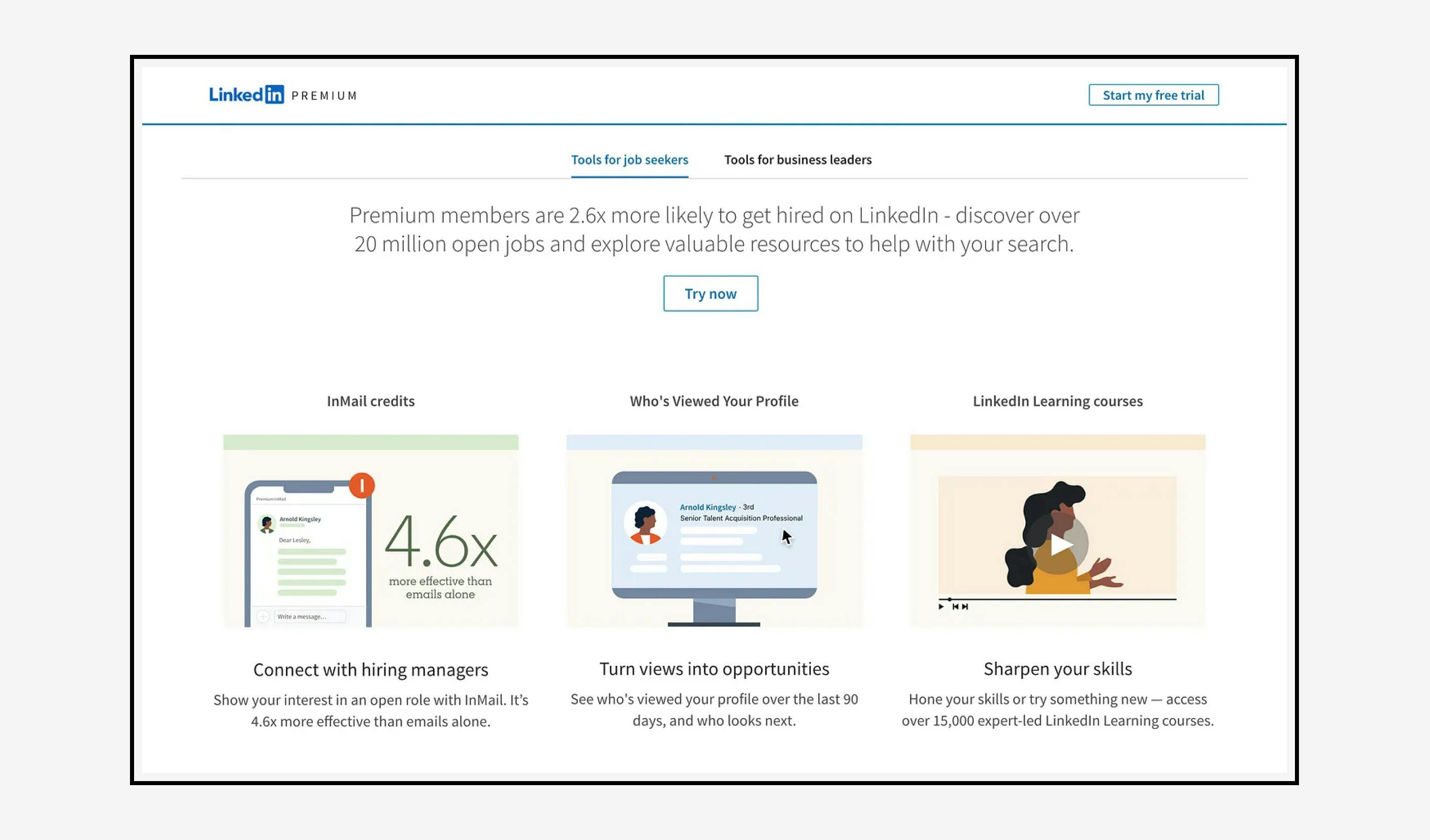Ethics in times of growth design
Can growth design be truly ethical?
Written by
Mary Borysova
Art direction by
Manoel do Amaral
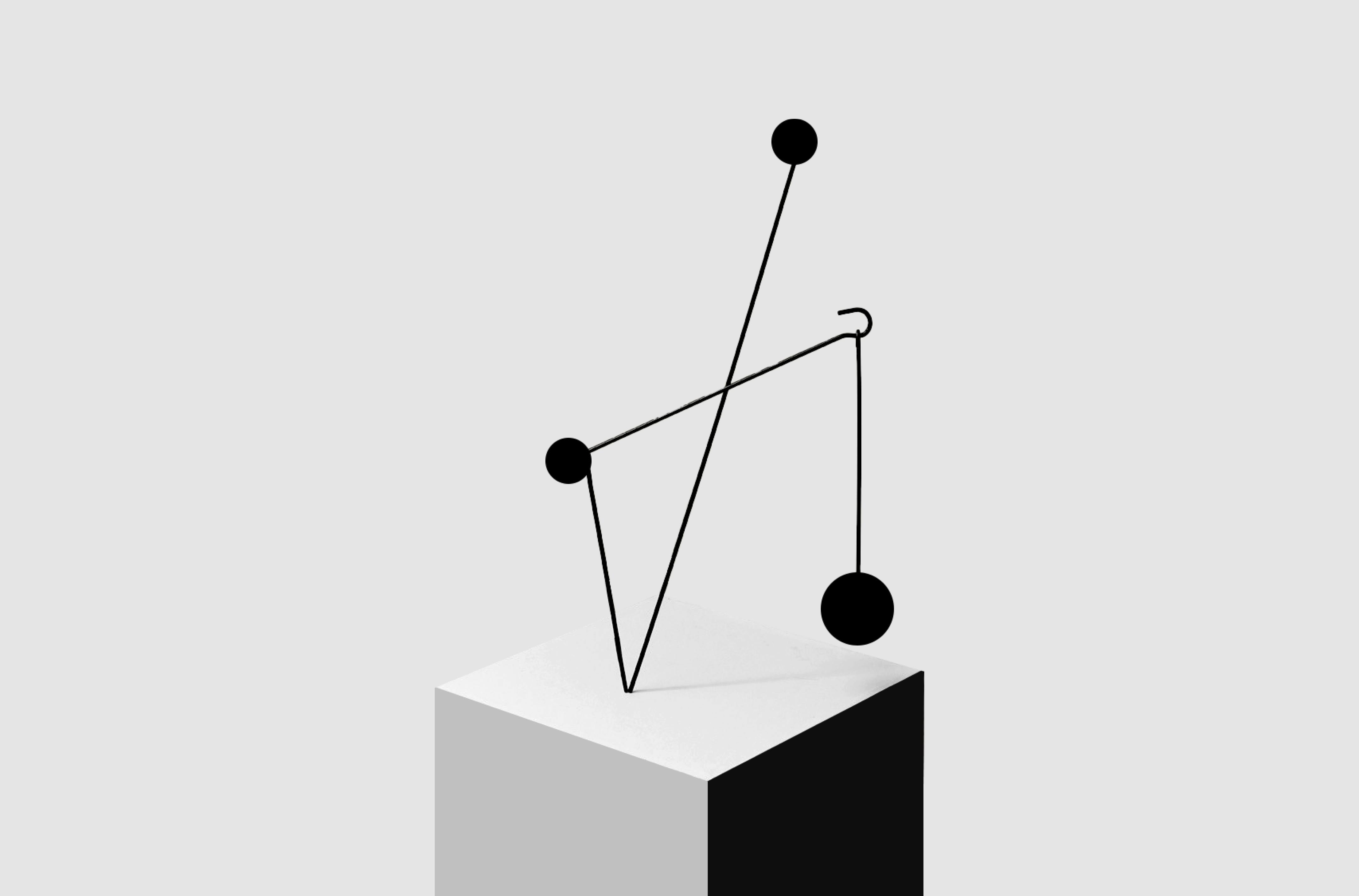
Cover image by Holger Kilumets
In an ideal world, designers create user experiences that drive business growth while following ethical principles. However, creating and maintaining this balance between growth and ethics is one of the biggest challenges a designer can face when growth is often the word in their job title rather than ethics.
Companies hire designers to help their businesses grow by creating seamless user experiences, optimized flows, and value in their products through differentiated capabilities. When the market is expanding, the company (and the designer) focus on innovation: finding new markets, experimenting with different value propositions, and creating new product lines. At times like now, when the market is contracting, the focus drastically shifts to optimization: how we can make the most, or squeeze the most, from the market base we already have. This extreme focus on marginal growth is when designers are pushed to the limit of this challenge of balancing growth and ethics.
Shaping ethical solutions
Growth hacks or so-called psychology tricks have a negative reputation. and it’s not a surprise. Think about the last time you stumbled upon such a “smart” hack — maybe when you were trying to unsubscribe from newsletters you didn’t mean to sign up for, or when booking a low-cost flight became complicated due to numerous upsells.

Multiple upsells in Ryanair checkout
The more marketers and people responsible for company growth learn about growth hacks, the more unpleasant some user journeys seem to become.
For example, monetization projects may introduce more points of entry to the paid features to promote them more, disrupting the user flow and potentially making them sign up for something by mistake.
Engagement and retention growth projects can include creating obstacles to cancel subscriptions or opt out of emails, and excessive emailing to bring users back to the product. Is it bad by default or it can be justified?
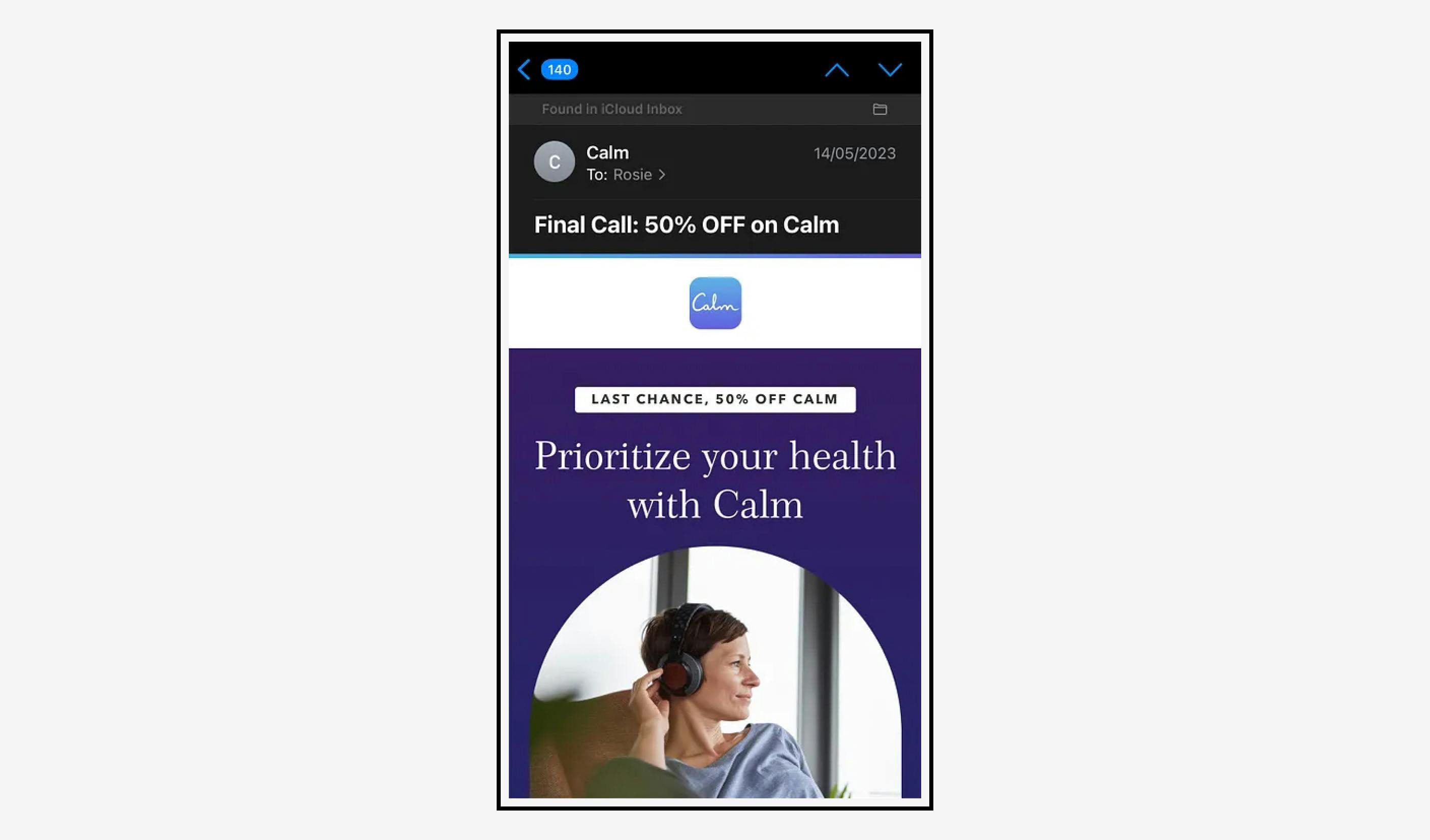
Graphics are courtesy of Rosie Hoggmascall and are part of her article
Imagine you’re working on a growth design project that involves limiting free access to certain features. How might you ensure users understand the value of the paid features while still respecting their experience as unpaid users?
Growth design projects can and should be ethical as well, and this can be achieved if these promotions are clear, respectful, and provide genuine value to users. Let’s look at some of these which managed to find a balance between business and providing value to the world.
Making job search and networking accessible
LinkedIn offers premium subscriptions that give users access to enhanced networking features, insights, and professional development courses. It is a good example of how a product can provide extra services to users who require them, while still keeping core functions accessible to all users.
Imagine you’re working on a growth design project that involves limiting free access to certain features. How might you ensure users feel the value of the paid features while still respecting their experience?
Journalism and free access to information
The New York Times has a subscription model that gives users free access to a limited number of articles each month and requires a subscription for full access. This approach supports quality journalism by ensuring a revenue stream, at the same time still permits users to engage with some amount of content for free.
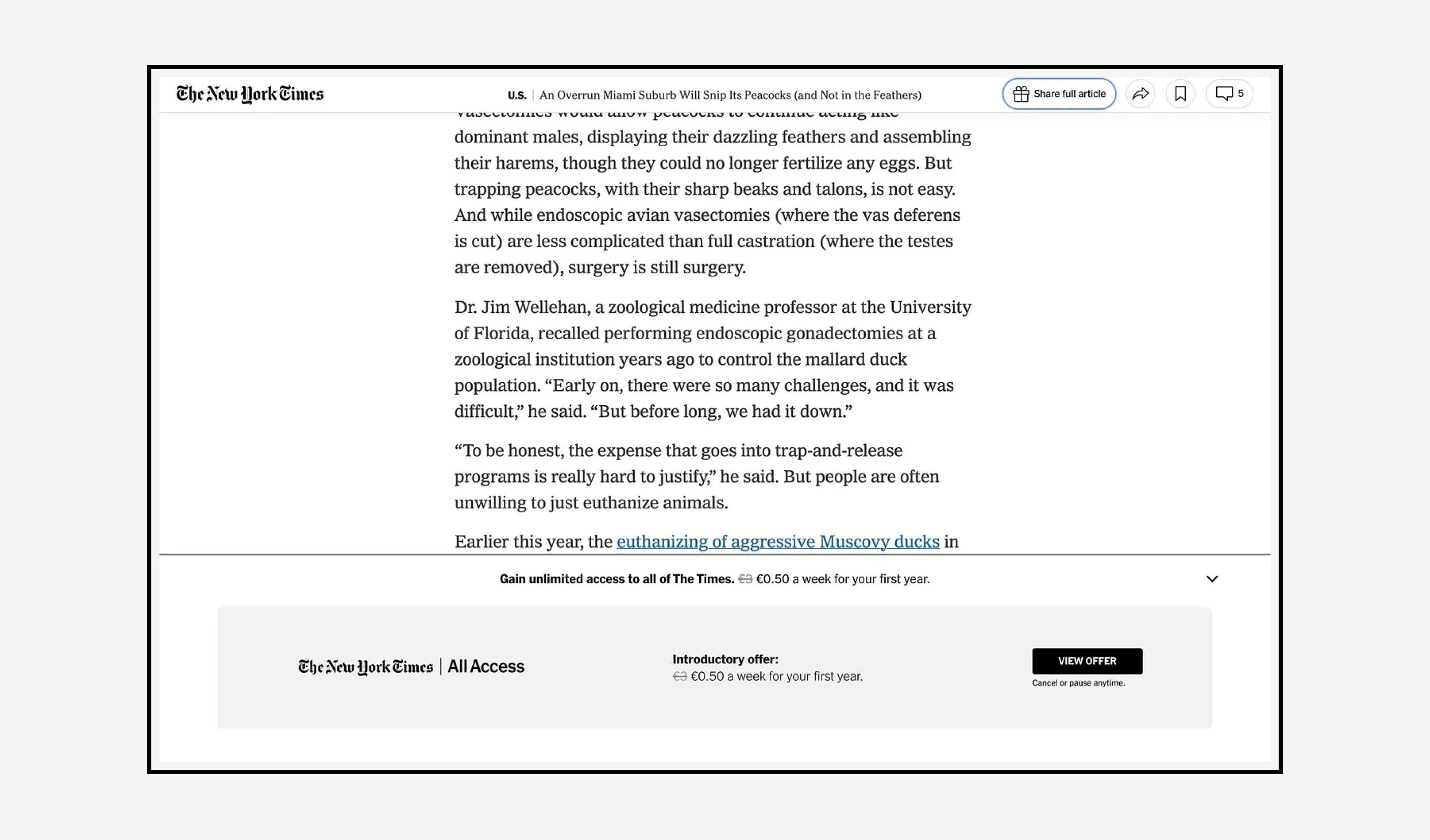
Article in The New York Times
Language learning with upgrades
Duolingo’s core language courses are available for free, and users can access additional features and content through upgrades. This way, all users can learn a language without financial barriers, but those who are interested in extra features, such as pronunciation exercises or no ads, can buy the Premium version. However, one can argue that their gamification and notifications systems are in a more grey area of ethical design.
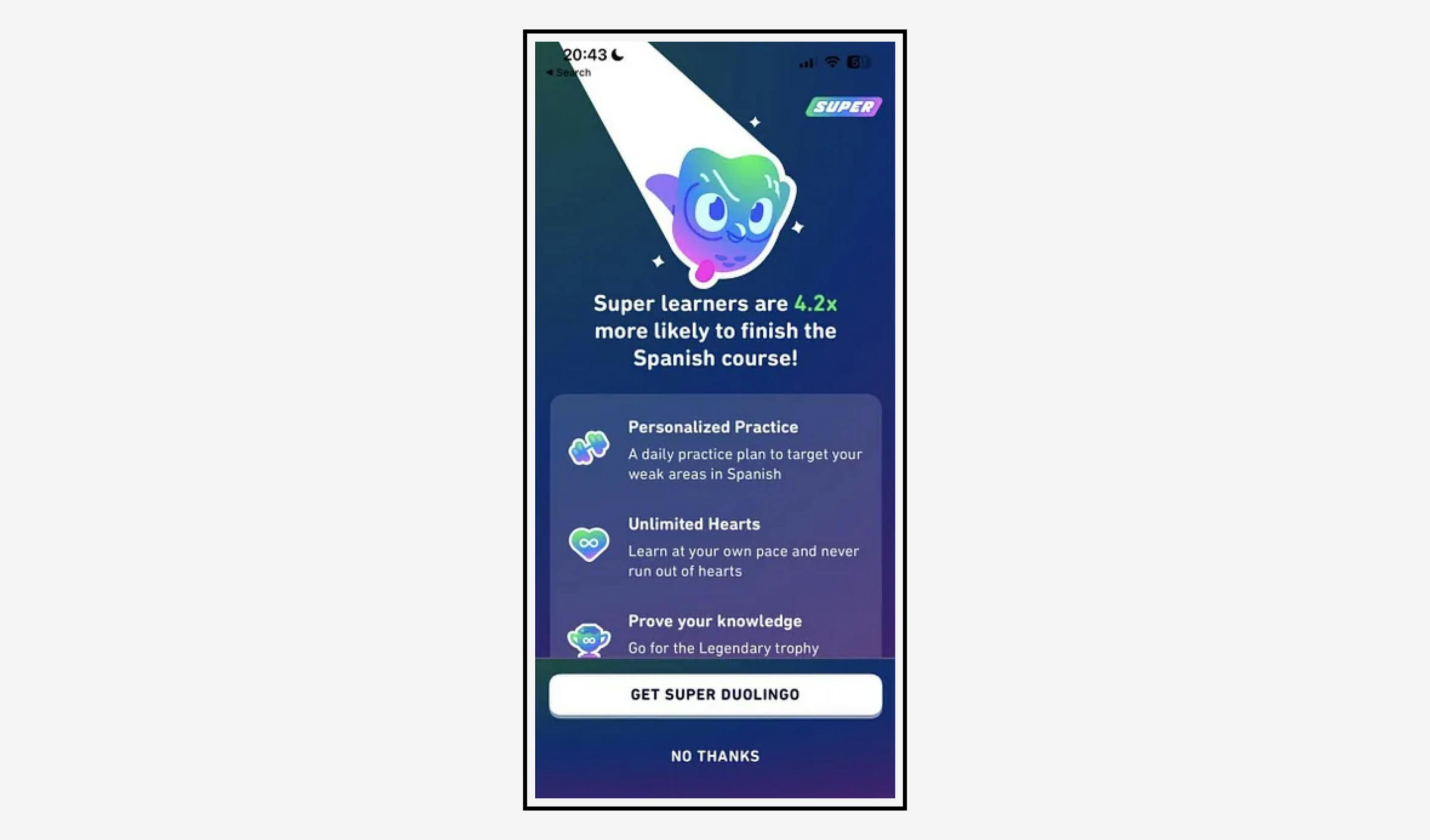
Duolingo application
Shaping valuable ethical design solutions in growth user experience projects is definitely possible. There is one caveat: it’s possible as long as the team is aligned and willing to follow ethical design principles.
And this leads us to the next point.
Right team culture
When working in product design, we often have to juggle between the requests from the stakeholders in the company and user needs and preferences. When working in growth design, we have to advocate for users, keep in mind requests from all stakeholders, and also make sure the project solution is well aligned with the company goals and the experiment plan is well designed.
While product design projects by nature are aimed at improving user experience, adding new functionality, or introducing innovations, growth design projects often aim to impact specific metrics the company deemed essential for this period.
So, how can you prevent compromising the user experience while also contributing to the business goals?
Ethical by design
Some companies have a design culture that promotes making ethical design decisions more than others. We all know about Patagonia which is committed to responsible consumption, uses recycled materials, promotes fair labor practices, and encourages customers to repair and recycle their clothing.
You can often tell if a company cares about ethical design by judging its user interface, but sometimes you will need to dig deeper and understand how decisions are made.
For example, a Twitter (or now X) employee have flagged that:
“…revenue-enhancing methods (such as increased personalization) would lead to ideological filter bubbles, open up methods of algorithmic bot manipulation, or inadvertently popularize misinformation.”
Ask a team during job interviews about how they are making decisions at the moment, what criteria they are considering, and if they employ ethical design principles.
Communicating your ethical design decisions
If you were lucky enough and joined a company that leans towards the “ethical design” spectrum you might have the opportunity to present and advocate for your ethical solutions, and your voice will be heard.
I have adapted the framework developed by The Markkula Center for Applied Ethics at Santa Clara and will further explain how I usually present my design solutions.
1. Who will be affected? How?
- Describe the audience that will be harmed in case the solution that is less ethical is dwelled on. Add actual portraits of the people, these can be screenshots from the interview sessions or usability studies. If applicable, share the user testing videos or at least clips from these sessions with emotional insights.
2. What are other alternatives?
- Be actionable — venting about unethical designs and issues will not help finish the project effectively. Brainstorm alternative designs you feel may work better.
3. Which option treats all parties fairly and with respect?
- Respect covers various aspects, such as valuing users’ time and resources, considering their mental health, and acknowledging their unique characteristics.
- Consider assessing mental load, clarity of the policies and extra fees, data privacy, and accessibility.
4. Which option will yield the most good and the least harm?
- Do the hard work for the stakeholders, prepare the designs, and list the pros and cons of each of them. Highlight the one that you think will be optimal for business and ethical for the community. Decisions should be logical, well-described, and easy to approve.
5. Can I test this solution before rolling it out for 100% of the audience?
- Some technical solutions are impossible to test using just a design prototype, for example, because they involve algorithms (e.g. personalized feed or suggestions). Yet to minimize the possible harm, you can collect and analyze feedback from a small number of users first and this may help you prevent causing harm to a bigger number of users.
6. Would I be proud to share my decision-making process with the public?
- At the end of the day, your contribution to both ethical and unethical design projects will leave a mark on the world. Keep this in mind, and consider your decisions from a long-term perspective.
- Jaycee Day shared her experience of advocating for a more transparent design solution during Config 2023.
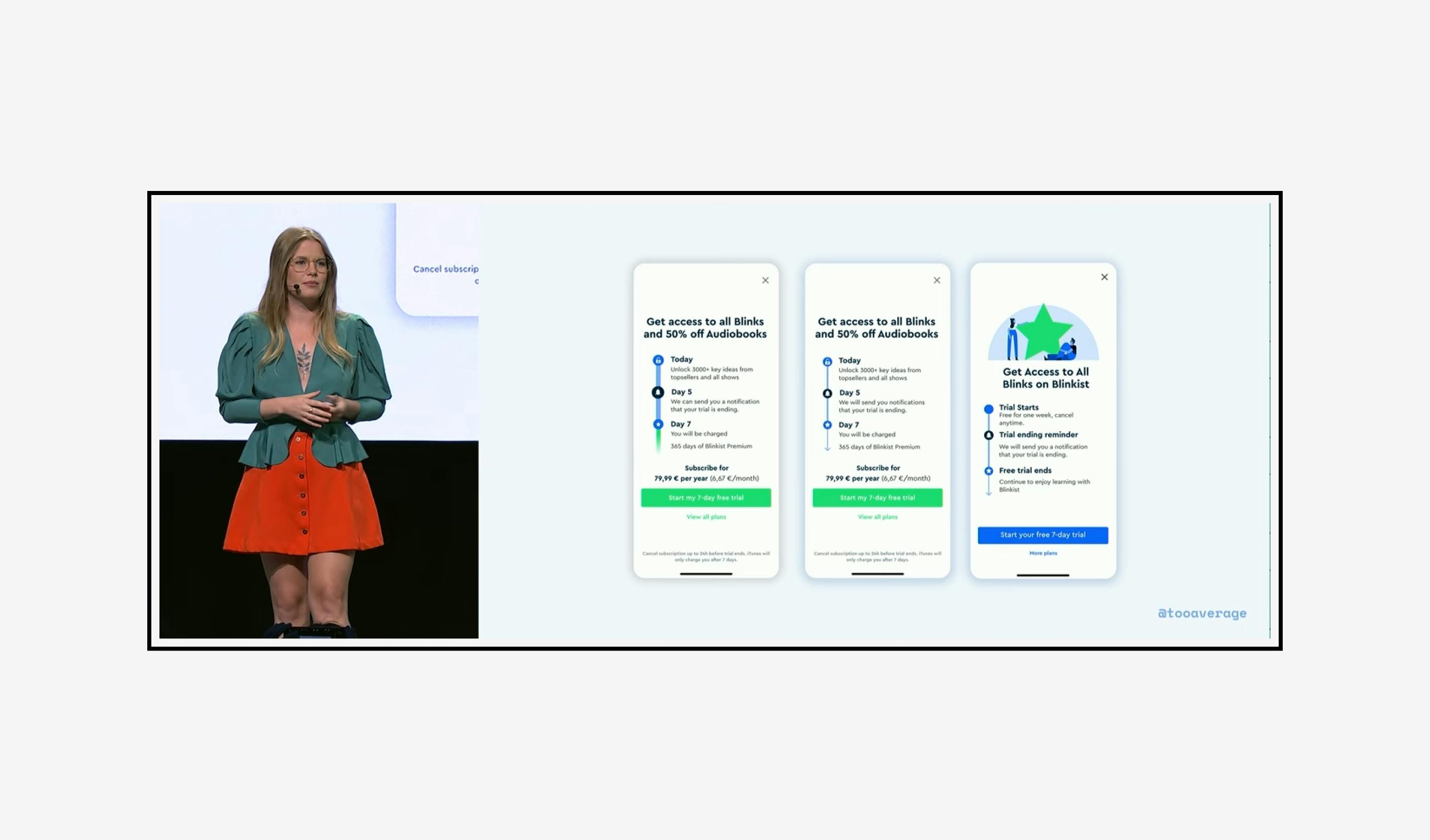
Jaycee Day talk
Going beyond the screens and flows
A mature designer or design manager has to carefully evaluate both the ethical aspects and benefits of the solution for the company and find a balance. Successful designers meet the business department in the middle and understand their needs to deliver the optimal product and drive company growth.
Steve Johnson — VP of Design at Netflix once have said:
Steve Jobs was a designer and a business person combined. He used design to help run his business. He used simplicity, beauty, ease of use, empathy and reducing complexity as a competitive advantage against Microsoft, Dell, etc.
Preparing for our roles as designers
Some short-term growth strategies may lead to undesirable long-term effects, which could be more costly for the company or even society in the long run.
Consider Uber’s case: Uber’s drive to attract drivers by offering big sign-up bonuses and incentives resulted in an influx of drivers. However, this strategy also led to an excess of drivers in specific areas and ultimately discontent among them. This market disruption, while one could argue allowed more transportation access to people, also impacted the jobs of taxi drivers and even policies around better public transportation.
The impact of certain businesses in society is complex to measure and, at times, doesn't have a direct causal relationship. That doesn't excuse designers from striving to find the optimum solution without compromising their ethical values. The best way to prepare for this job is to make an active effort to learn, research, and re-educate ourselves about the technological, juridical, and societal developments happening around us.
